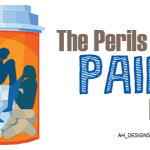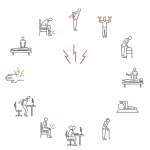(Reuters Health)—When one person in a household gets prescribed opioids, the other people who live with them are more likely to get their own prescriptions for these narcotic painkillers, a U.S. study suggests.
Researchers examined data on about 12.6 million people living in a household where someone was prescribed opioids and 6.4 million individuals in homes where someone was prescribed a different option for pain—nonprescription steroidal anti-inflammatory drugs (NSAIDs).
Overall, 11.83% of people living with someone prescribed opioids and 11.11% of people living with a person prescribed NSAIDs started taking opioids over the next year, the study found.
“We already know that patients often share their prescriptions for opioids with a family member,” says lead study author Marissa Seamans of the Johns Hopkins University Bloomberg School of Public Health in Baltimore. “What we didn’t know is whether family members of opioid users are more likely to fill opioid prescriptions themselves than family members of non-opioid users.”
The increase in absolute risk was small—less than one percentage point.
“But this matters for patients because millions of opioids are prescribed and have harmful effects,” Seamans said by email.
Opioid prescriptions in the U.S. surged by 300% from 1991 to 2009 and totaled 246 million by 2015, the researchers write in JAMA Internal Medicine.1
To assess how one person’s prescription might influence others in their household, the study team looked at insurance claims from 2000 to 2014 for people who were living together and had the same benefits.
The rise in risk of opioid use with another user in the household was small across all age groups. It was greatest, at 1.26 percentage points, for adults aged 26–35 and it was lowest, at 0.41 percentage point, for children 11 or younger.
When the first person prescribed opioids had back or neck pain or a fracture, the risk that another person in their household would get opioids was slightly lower than when the first person didn’t get opioids for these reasons, the study also found.
One drawback of the study is that insurance claims don’t shed light on the reasons prescriptions for opioids might run in families.
“It is possible that this is due to increased rates of chronic pain in people with family members with chronic pain,” says Dr. Chad Brummett, a researcher at the University of Michigan in Ann Arbor and co-director of the Michigan Opioid Prescribing Engagement Network.
“However, it is also likely that living with an opioid user alters attitudes and beliefs about the risks and benefits of opioid use,” Brummett, who wasn’t involved in the study, says by email.


